OpenLab DaBY Round Table Talk vol.1 Saori Harasaori x Yohei Hamada x Takuya Fujisawa x Eri Karatsu Case Study: Overseas Creative Environment (3)

OpenLab DaBY Round Table Talk Case Study: Overseas Creative Environments vol.3.
vol.1 is here
■ vol.2 is here
Click here to see the full video.
Speakers: Saori Hara, Yohei Hamada, Takuya Fujisawa, Eri Karatsu
Facilitators: Chihiro Tokai, Yuka Kamimura
Relationship with the audience
Karatsu: So far we have mainly heard about the creator side, but another thing we are interested in is the relationship with the audience. I think that being able to support a performance so much means that there is a need to see it, or that the budget flows because of national pride or because it is connected to enhancing the dignity of the municipality.
In Japan, dance is rarely handled by various theaters. I mentioned earlier that there are 3,000 theaters, of which 99% are mostly rented out. 1% or so are engaged in independent programs, but among these, I think there are only about 10 theaters that offer additional dance programs. Even if they do, it is only one or two a year. The biggest reason why dance is not taken up is that there is no audience. Of course, an audience will not be born unless we perform, so I think we have no choice but to continue to do so. In each country, I would like to ask if there are many people who come to see the dance because they like it, or if they continue to do it because it is important to keep doing it, and if the audience is growing as a result.
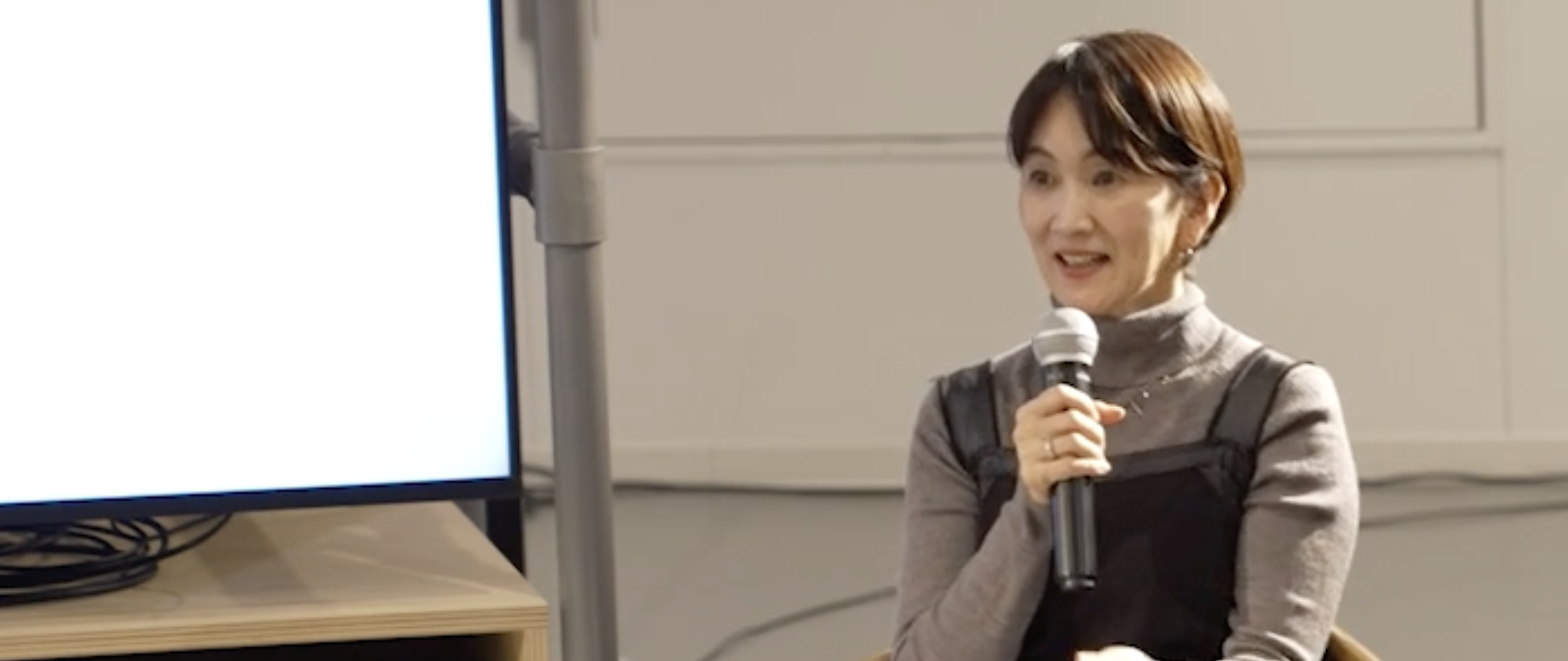
Hamada: To begin with, the population of Norway is about 5 million. That is about one twentieth the population of Japan. Dance houses and Dansens Hus (Dansens Hus) have about 400 seats. There is no way to fill them. For example, Carte Blanche ( Carte Blanche, the national contemporary dance company, can accommodate about 200 people per performance, but they don’t seem to aim to fill it. So, if you invite 100 people to a performance in Norway, they say it’s great. Artists don’t have to sell their work by hand, but I think there is a problem of not inviting too many people.
From another perspective, people who are doing similar work in the same industry as us sometimes send their works created for children to schools. It is not only the performing arts, but also art and film. I think there are similar initiatives in Japan, but Norway is also working on exposing schools to something by professional artists quite often, four times a year. I am not sure when this officially started, but I think it is probably a new initiative. They are also trying to nurture that kind of thing in the classroom, and they are working on a policy that even if you live in a rural area, you have to create an environment where you can come into contact with art and culture in the same way. But there is an audience problem, for example, in the town I recently moved to, for the first time a Norwegian national company canceled a performance because only five tickets had been sold one week before the performance.
Karatsu: Is it totally different when it comes to the National Ballet of Oslo, for example? In Japan, I think there is quite a distance between ballet and contemporary dance. The Norwegian National Ballet has a thriving image.
Hamada: Perhaps you are right. I don’t know much about it myself, but I think opera and ballet are more active.
Fujisawa: Like in other countries, the tastes of people living in different regions and towns are different. For example, in Gothenburg, where I live, there is one of the biggest companies in the world, but unfortunately, the people who live there do not like dance. We have visitors, but what they like most are musicals and plays. Dance is stronger in the north and in the south, in Stockholm and Malmö. So, depending on the town, there is a clear difference in the people who live there: some like orchestras, some like opera, some like plays, and some like dance. The same is true for ballet. The people of Gothenburg like ballet. Whenever the Bolshoi Ballet or other touring companies come to Gothenburg, they always sell out.
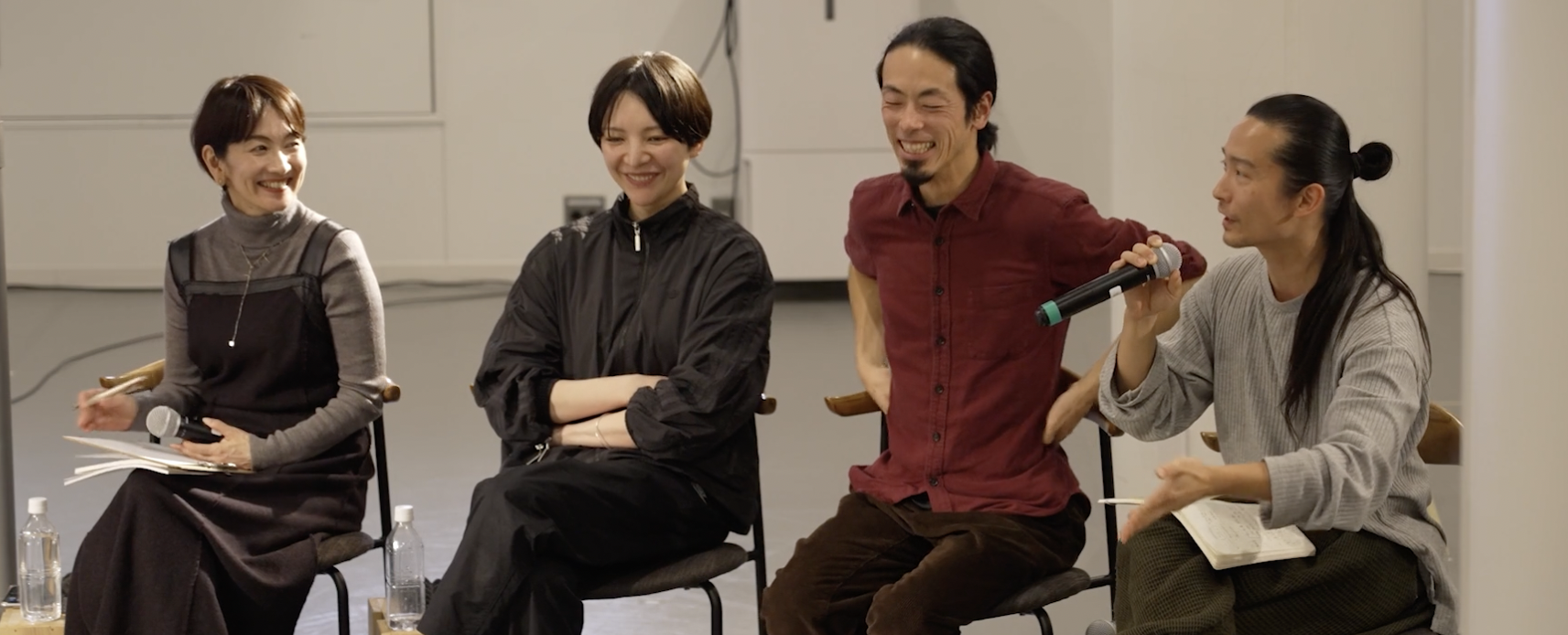
Karatsu: The Gothenburg company tours a lot internationally and is very popular, but is that not the case locally?
Fujisawa: In Sweden, the term of an artistic director of a company is four years. There is a rule that even if it is extended, it can only be for five years. Depending on the director’s policy, the type of work to be performed each time changes. The current director, Catherine, is pushing for opera. Because of the Corona disaster, she was given an irregular extension, and her term is eight years. She is very good at how to bring people in, and the audience has grown considerably. Gothenburg Opera is a repertory company, which means that we don’t have a dedicated choreographer. We invite choreographers from all over the world to work on each project, and since the choreographer and the lineage of the work are always completely different, we hold workshops before each performance where the dancers tell the audience about their experiences with the choreographer’s style and production methods. I think this increases the audience’s understanding and satisfaction. We also do simple exercises together and work on experiencing the work with our bodies rather than through classroom lectures.
School performances are also very much a part of the educational process, and simply having school performances increases the number of audiences. There is also the advantage that school budgets and cultural budgets are mutually reinforcing. However, if the school performances are good, some students who see them may want to become dancers, and I think it helps them to become interested in culture and make it a part of their lives. I think it helps people to become interested in culture and make it a part of their lives.
Karatsu:It is true that Scandinavian works have a strong image of being for children. It was not only for children to see, but many of the pieces were enjoyable for children as well.
Fujisawa: The budget may differ depending on whether or not children are included in the target audience.
Hamada: When making grant recommendations, there are categories for ages 0 to 6, 6 to 12, 12 to 18, and 18 to 24, right?
Fujisawa: Yes, there is.
Karatsu: I see, it is quite a challenge to have to watch 0 to 6 year olds.
Fujisawa: That was interesting. A lighting designer is the main person working on this project, and it seems that there are new initiatives such as viewer-friendly lighting for children with hearing and visual sensitivities, and music that is not blaring (too loud).
Hamada: Because of the research and accumulation that is done by subdividing the age groups, for example, I have seen sites where they are creating how to do things based on the developmental stages of children from 0 to 3 years old, and I have thought that it is somewhat like a different profession.
Karatsu: Yes, that’s right. Because the sense of cognition is different, they are very finely divided. For example, I have heard that the theme of a program for junior high school students may be a kind of self-discovery that fits their adolescence. In Japan, kids’ programs are often for junior high school students and under, and elementary school students and under.
Hamada: I think that messiness is good. In Norway, we have the problem of dividing them too much and why they can’t come together. There are no people from the middle tier of performing arts students to grandparents. I even had to write a report the other day about how I was able to invite everyone from 3 years old to 60+. It is fine to please three different generations in different places, but there is an underlying desire to create something that can be seen together, and that is a problem that is too often not understood. There is a movement to create productions for seniors, and I have heard of such efforts, but I feel that, for example, the productions produced by a certain theater are generally geared toward this age group, and there are too many fixed ideas about what they are supposed to be like. I think that theaters are also searching for new ideas.
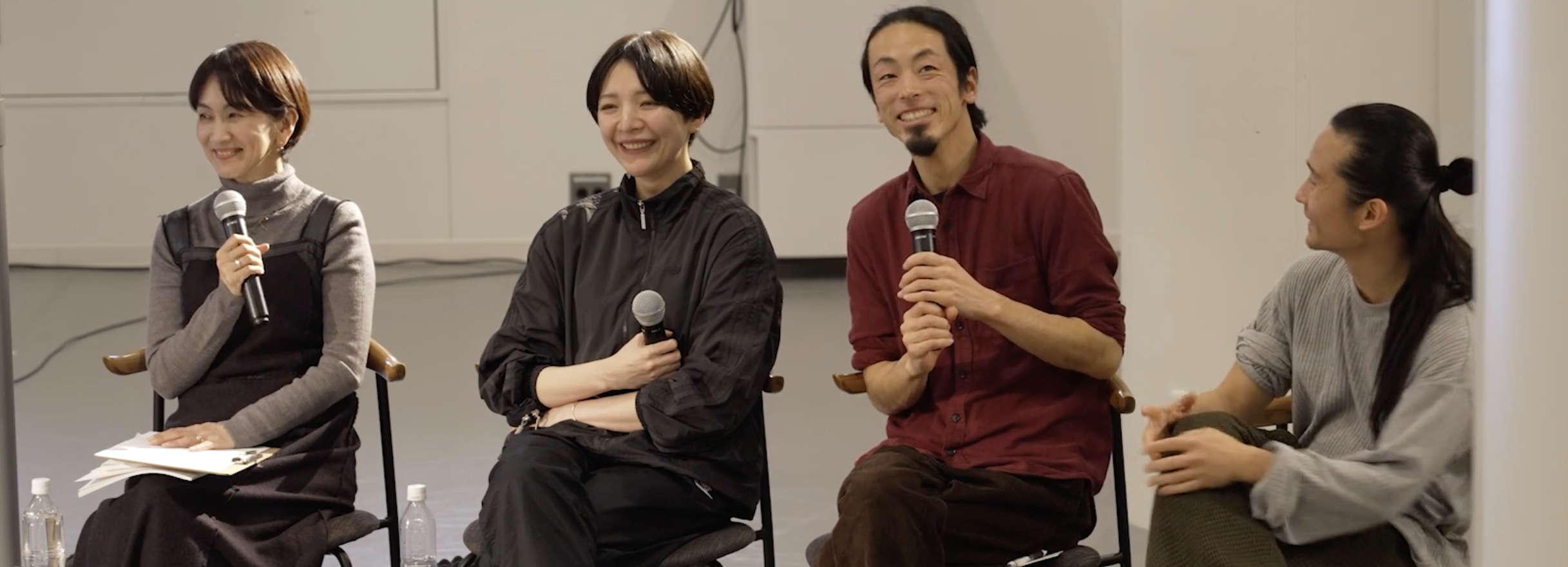
Karatsu: Yes, that’s right. There is a part of you that wants to subdivide, but there is also a part of you that wants to create universal works that can be seen by all ages. I get the sense that all theaters are exploring the conflict between these two aspects and the mechanisms for attracting audiences. Of course, the same is true in Japan.
How do you feel about the situation of the audience in Berlin?
Hara:I wasn’t really conscious of the age of the audience, but Germany has a strong theater culture with opera and ballet, so there is probably a sense that the audience is going to see someone. There are places to chat after the show, and there is no sense of “leaving the audience” (i.e., asking the audience to leave the venue to clean up after the performance). The foyer has a function for eating and drinking, and the act of watching a play is at the entrance to the community. There may be some new development in the genre, but there is no such thing as a lack of people coming to the theater. However, I think there is a bias toward older audiences in some theaters, such as conservative German theater. There are three or four theaters that I visited in Berlin, and there were quite a few young students and older people. However, the situation in Berlin is quite special: everyone comes to see the productions, older people come to see experimental works, and they want to communicate with the artists, and Berlin is a punk town. So I don’t think there was excessive promotion.
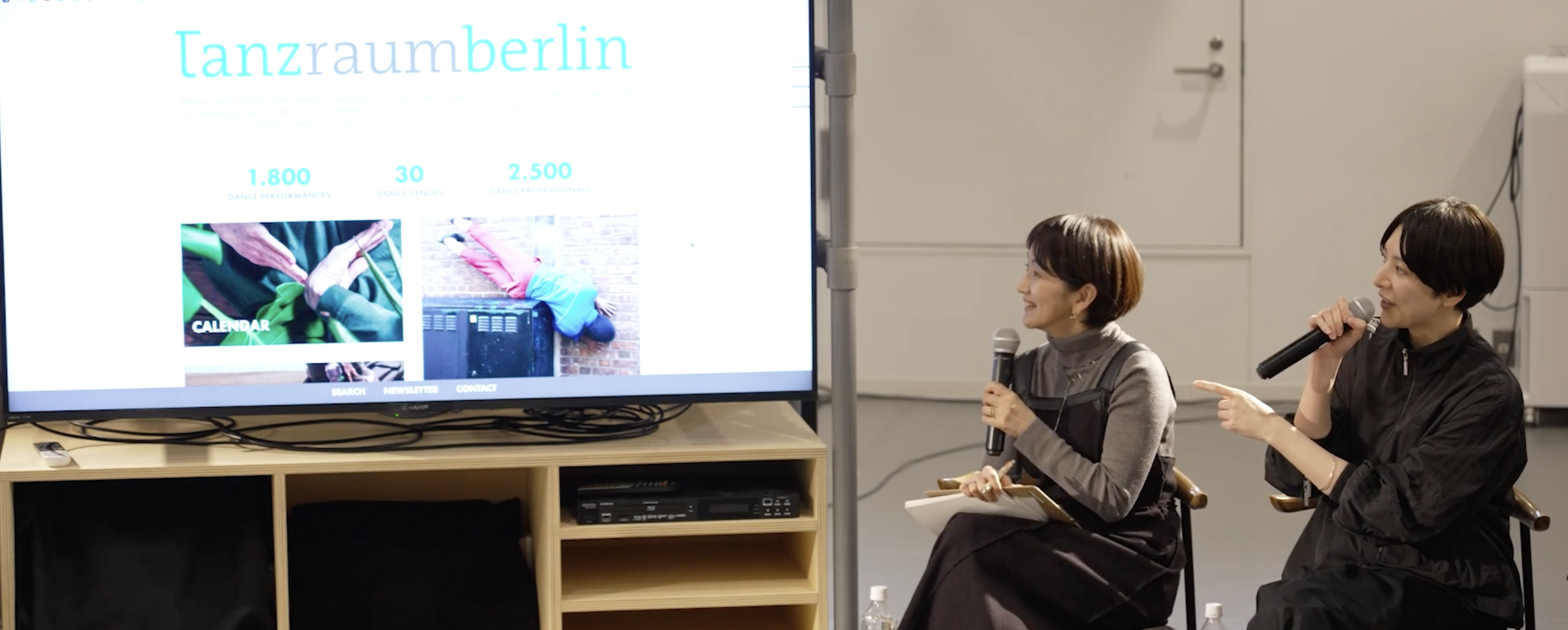
Hala: Instead, the platform is very well developed. Tanzburo(tanzbuero) is doing it. Tanzraum (It’s a website called tanzraum (tanzbuero). There are 1,800 dance performances, 30 dance venues, 2,500 dance professionals, and so on.
Karatsu: By dancevenue, do you mean a dance house or a theater that does dance?
Hala: You mean the place where it is staged. This site is very interesting and I definitely want to see it made in Japan. It covers all venues and shows. If the audience wonders what is being done today, they can go to Tanzraum. It describes the whole area of Berlin.
Karatsu: It’s great.
Hara:First of all, I think it would be good to have just Yokohama and Tokyo, but at least have venues in the Kanto area collaborate with each other. It would be great to have everyone doing promotions for the customers. When you look at the calendar, you can see what is going on that day in order of date. Of course, it also covers national ballet and contemporary circus, and there are a variety of genres. Also, I’m on the review platform.
Tanzschreiber
(tanzschreiber). There is also access to reviews and critiques of works. There are pure audiences, and it’s good that the dancers see dance, and I don’t feel any bias, which is good.
This would create “box fans”. If the curation becomes more distinctive, there will be more fun for the audience to map. I would love to see this happen in Tokyo and Yokohama (laughs). What I hope to see realized in Japan is a platform.
Tokai: In Japan, everyone is divided, and as a result, people who like it can go and get information, but it is difficult for people who are a bit interested to find information.
Hala: It can be hard to introduce it to people.
Fujisawa: I think it would be very good to put it all together on a website, though, FOLKTEATERN(FOLKTEATERN), which is a facility close to a community center or cultural center, but a little different from a theater. It is a theater mainly for plays, but it is the most crowded bar in Gothenburg. So instead of going to see a play, it’s really like a hangout for young people who say, “Let’s go there. Whenever there is a performance, that person is always at the bar, watching people’s movements and making improvements if there are any problems. I remember the efforts to increase the satisfaction of the experience of the place, rather than hitting marketing by attracting customers.
Q&A
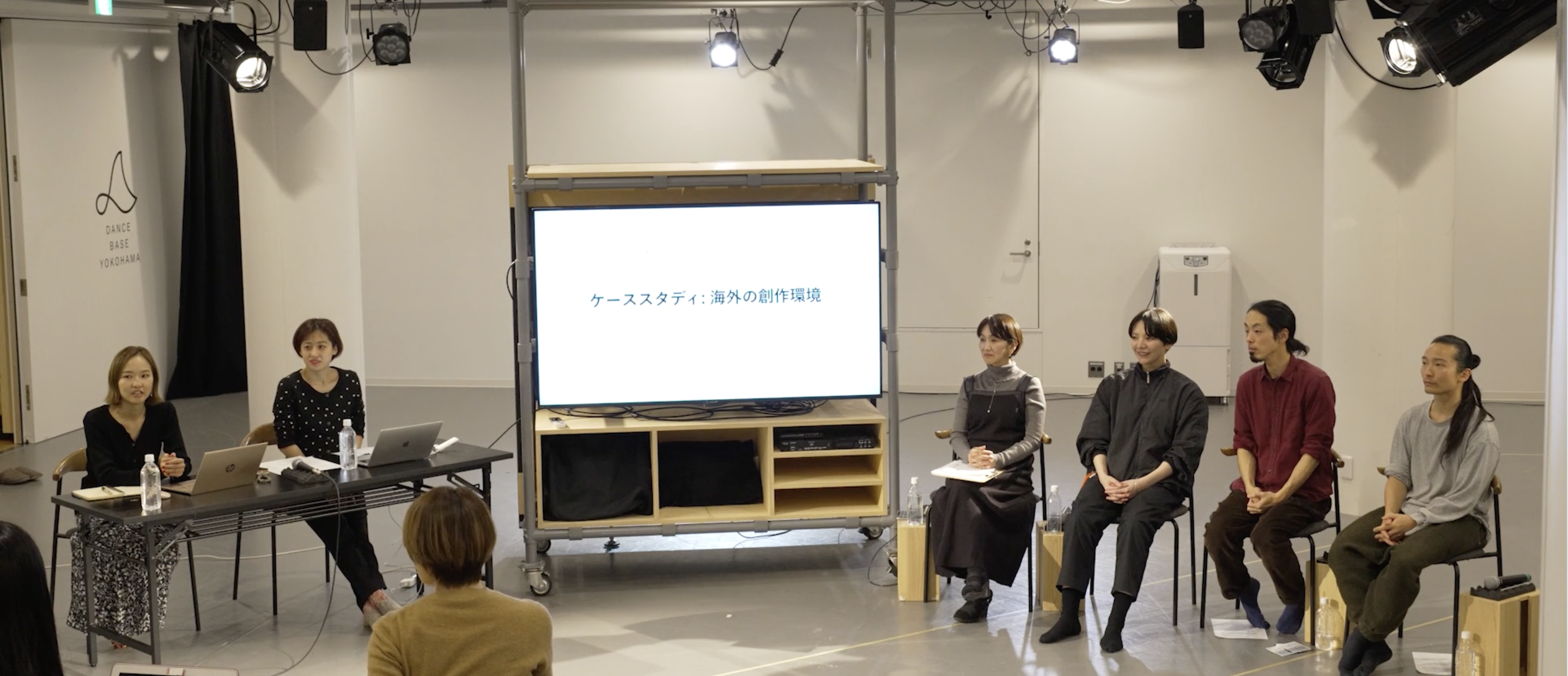
QUESTION 1: Related to what you said about pure audiences, what is the approximate price of a ticket for a performance? For example, I would like to ask about the difference in price from ballet or something that is done at a national theater.
Hala: For a young choreographer’s work like I was seeing, it is like 15€ or 12€. For those who can afford to pay a little, it is like asking for a donation. There are days when you can see something very interesting for 8€, or a great artist gets very excited with a 2€ donation for some reason. (laughs)
That could be because the theater is supported by the government, or it doesn’t cost rent to begin with, or there are many other situations. On the other hand, ballet may be more expensive. For neoclassical works and company performances, the price may be 40€. For independent freelance choreographers, 20€ is a bit expensive. In Japan, it would be about 2,000 or 2,500 yen. Now with the depreciation of the yen, it may be a bit more expensive.
Hamada: When I mentioned ticket prices, I thought it would be a good idea to talk about hourly wages. Let’s say a general ticket at the theater I was working at cost about 25€. But the minimum wage for bartenders and people working in cafes is 17-18€, so I guess it’s not that high to say that. They have been offering a discount for a while for those who are members of that theater’s association to get 12-13€. Starting with the August season this year (2023), they introduced an experimental donation system. By the way, tickets for the performances that are held at the cultural center where I recently moved are often 35-40€. I don’t think they are much cheaper than that.
Fujisawa: In Sweden, the prices are similar, and you can see a performance for about 2,500 to 3,000 yen in many places. However, it depends on the scale of the performance. For example, the price for a musical can go up to about 8,000 yen. As is the case in Japan, there is a difference in ticket prices depending on the type of seats, such as S, A, and B. There is a wide range of discounts, such as half price for those under 25 years old, silver discount, discount for the physically disabled, and often free admission for elementary school students and younger.
As for discounts, there are employee discounts. If you have a lot of all-in-one theaters, and you have costumes and stage sets circulating only in the opera, you have quite a few employees. In an opera, there are usually about 600 people working there, and we sometimes offer not only the performers, but also the employees, if they have extra tickets after 3 pm on the day of the performance, they can see the show for 600 yen. That is not only for the employees, but the employees can give them to other people, so I think such discount tickets are significant in terms of increasing new attendance.
Also, the people from Dance Centrum and the federation I mentioned earlier often send out discount ticket notices through the mailing list on a regular basis. Federation members and Dance Centrum members are allowed to see the show for about 600 yen. Also, Dance Centrum and others do the advertising for freelance stages. In addition, they distribute notices of performances and discount tickets to other registered freelancers, which also helps to increase attendance.
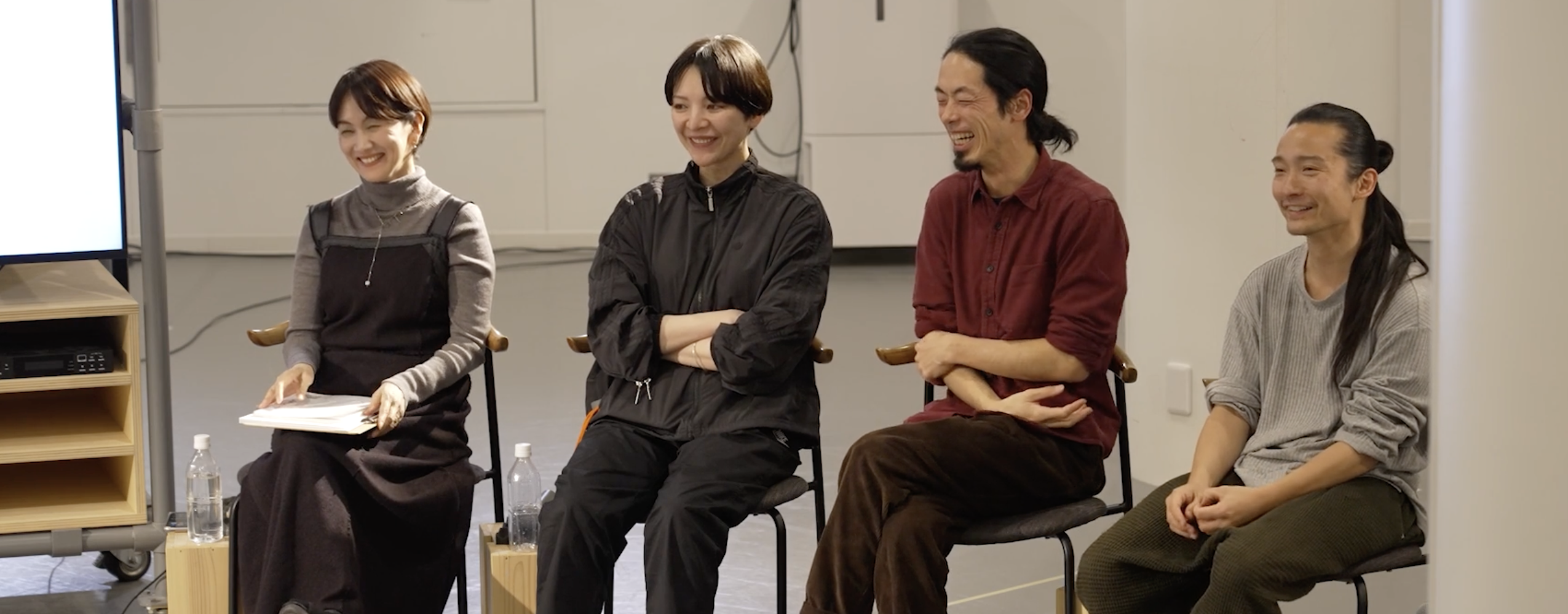
Questioner 2: How does it inspire you to be a minority where you all are now and to be aware as Japanese in different countries as dancers and artists?
Hala: In my case, I assumed that everyone was different because Berlin is a place where everyone is a minority. It was surprisingly difficult to say what it was like to be Japanese. But when it came to the line of funding, I had to write very much, and there was a gap with that realization.
I also felt that, if anything, Japan’s position in Asia should be studied again when it is considered as part of Asia. Japan was the first country in Asia to be westernized, and we have come this far without thinking about how to connect traditional and contemporary dance. In other words, contemporary dance has been separated from the rest of the world as something imported. On the other hand, there is a Thai artist named Pichay Krangchen, who is very conscious about how to connect Thai traditional dance and Western contemporary dance, and what he is doing as an artist living in the modern world. I don’t think that is a strategy, but perhaps that is what his experience has led him to do.
I went from Japan, which had become westernized, to the West without such a circuit for myself, and I did not study enough about the history of Japan’s position in Asia. This time, rather than coming back to Japan, I decided to change my location this summer with the intention of returning to Asia. But I guess it was only possible with a Western perspective.
Hamada: I am quite confused myself. I feel more Asian, or even East Asian, than Japanese. If I start thinking of myself as Japanese, the number of people who have been active in Norway for 10 years is probably zero or one.
Until recently, I was not aware of my status as an immigrant. I had been so intent on coming here to study in order to return to Japan that I was not sure of my position, partly due to the influence of Corona, and I was supported by the support system over there, but being swallowed up is probably the closest I can describe myself. But when it came to the point where I decided to do it as an immigrant, what was I going to do? But I did not have the original idea of making a work only with immigrants. For example, if I could share something animistic now, I would go down to the Baltic from the Arctic Circle, and I am looking for people who can share my interests in such a large framework. But I am confused.
Fujisawa: When I left Japan, I tried not to have anything to do with Japan. I didn’t hang out with Japanese people over there, and I tried to avoid going to Japanese communities as much as possible, so that I could detach myself from Japan. However, I was actually working in the company, and since I was Japanese, I was told not to cut my long black hair, and the experience of being used as an Asian was refreshing, and it was also the part that led me to realize that I, myself, was Asian. I had the experience of being cast as an Asian without even auditioning. I was told to just speak Japanese, no matter what. However, it was not just for me. The company itself is an international company with members from 17 different countries, so everyone has to speak in their own language to everyone else. You have to have a stereotypical character as one of your strengths, but you also have to have a part to show that you are not like that. I realized that I don’t know anything about Japan.
Apart from that, something else that I thought was common sense after living in Japan, for example, is that Japan has a great deal of food education. The idea that food builds the body is so prevalent in Japan that it is not even part of the common sense. If you get injured, you should eat cartilage, etc. It is not like the wisdom of a grandmother, but if you eat iriko (dried sardines), your bones will become stronger. People over there don’t know about this. Recently, when I saw something on the news about the obvious fact that food builds the body, it made me realize that what we usually do without thinking about it is very valuable.
Tokai: Thank you very much for your time today.


